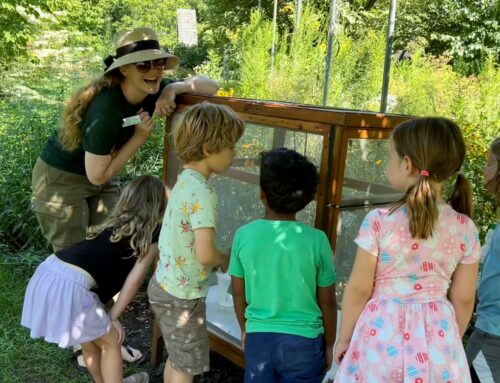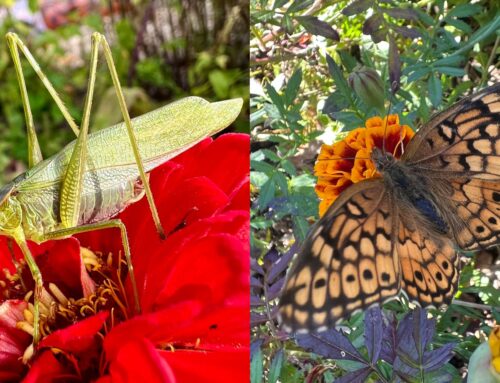PA Master Naturalist’s Notebook: May 13-20, 2024
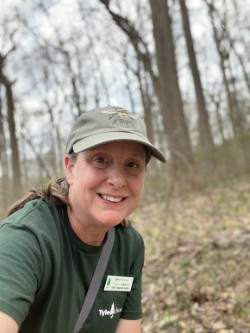
As the Program and Tour Coordinator at Tyler Arboretum, every week I look forward to preparing my weekly report for our volunteer educators.
I draw upon my training as a PA Master Naturalist to highlight the plants, insects, animals and other natural phenomena I’ve recently observed on Tyler’s grounds. I include photos (and some videos) along with educational tidbits our volunteers can share with our visitors.
My colleagues have encouraged me to compile my weekly reports into a biweekly blog for you. Here’s what caught my attention at Tyler Arboretum for the weeks of May 13 and 20, 2024. I’d love to hear from you about your observations too! Please email me anytime at tmallon@tylerarboretum.org.
Report: May 13, 2024
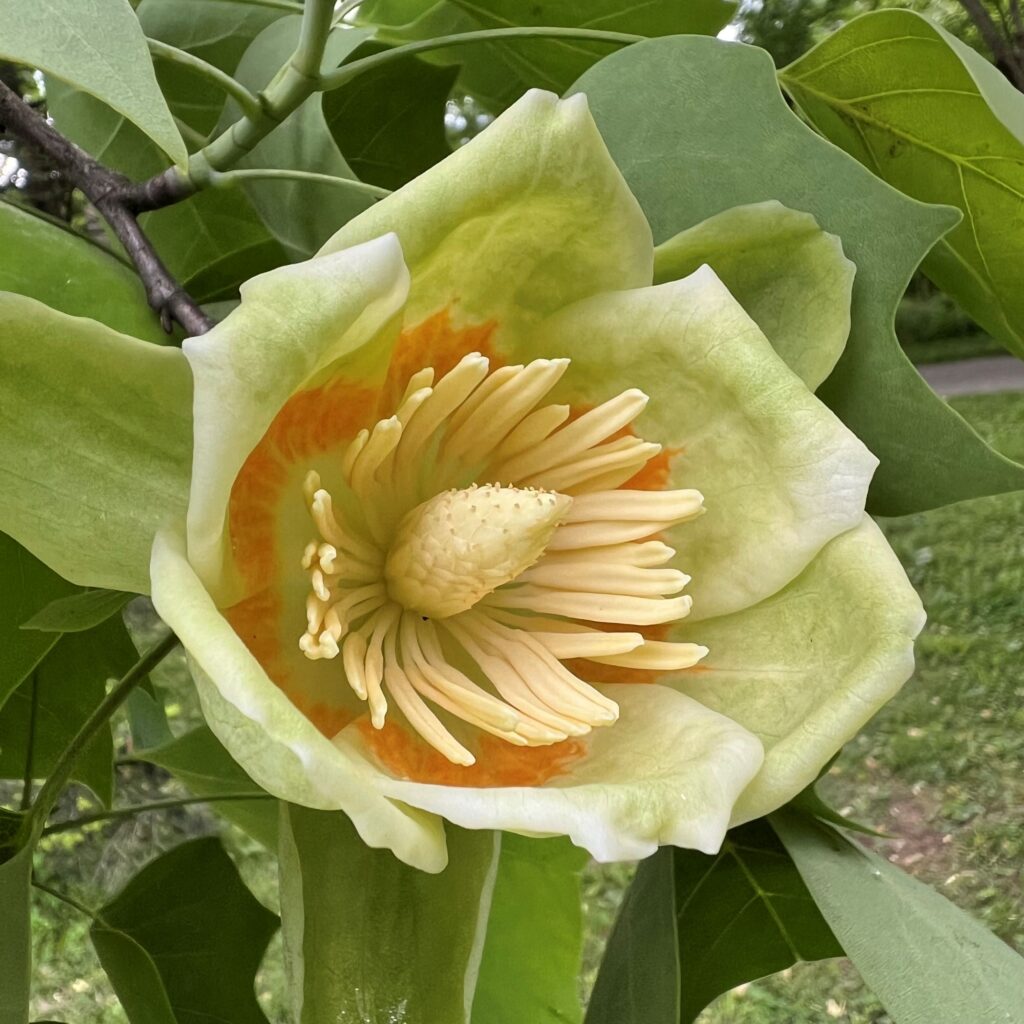
Tulip tree (Liriodendron tulipifera)
One look at the flower of this native tree and you can guess it’s in the Magnolia family. Tulip trees play an important role in our ecosystem. The flowers are visited by bees and hummingbirds and the seeds are eaten by birds and squirrels. They are one of the host plants for Eastern Tiger Swallowtails and the sole host plant for the Tulip Tree Silkmoth. If you are not tall enough to observe the flowers on the tree, look for specimens on the ground. Squirrels chew the small branches causing the flower to drop to the ground. This tree is on the scenic loop, catty-corner to the large hollow stump.

Philadelphia fleabane (Erigeron philadelphicus)
This member of the Aster family is blooming everywhere right now. While some buds and flowers may exhibit a pinkish hue, the flowers generally turn white as they mature. The common name comes from the mistaken belief that the plant repelled fleas.
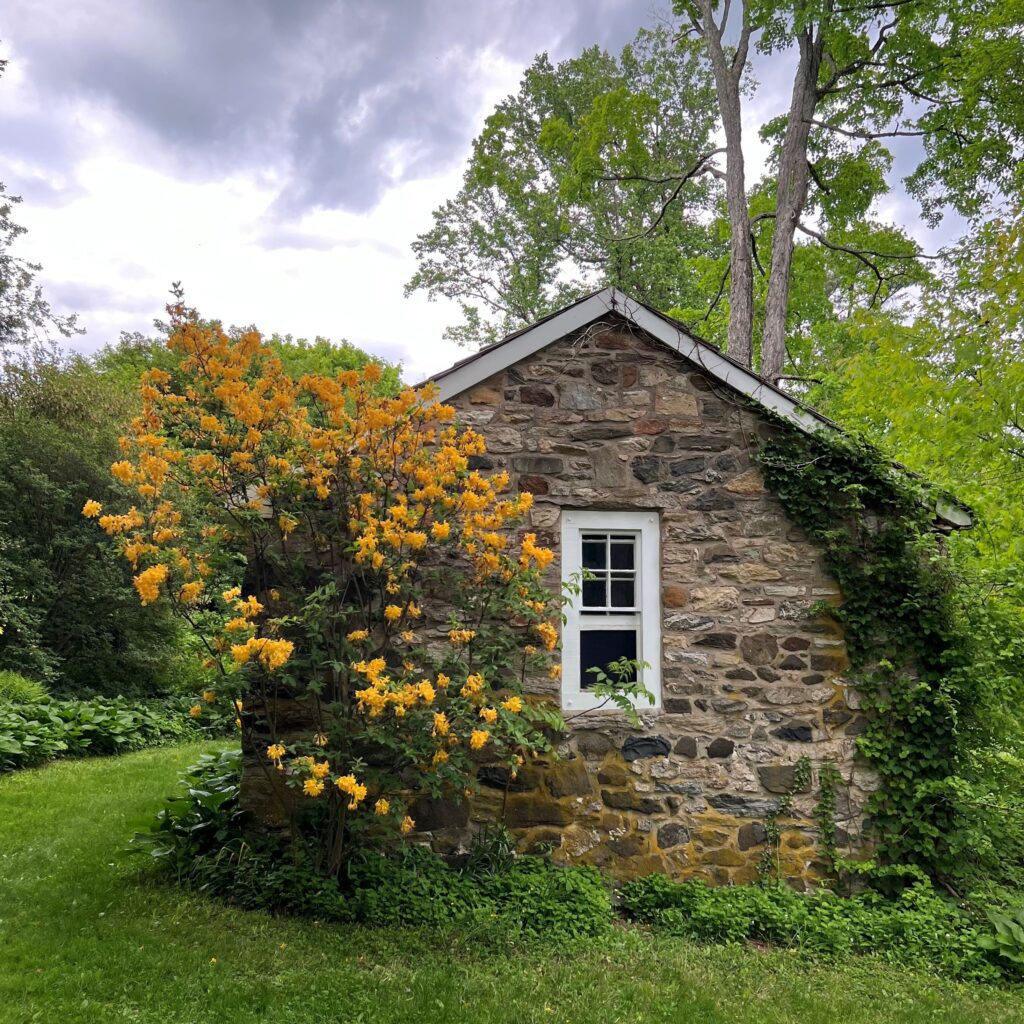
Rhododendron “Sunstruck”
The rhododendrons and azaleas in the Native Woodland Walk and Wister Rhododendron Garden seemed to be at their peak last week. This orange variety can be found on either side of the spring house.
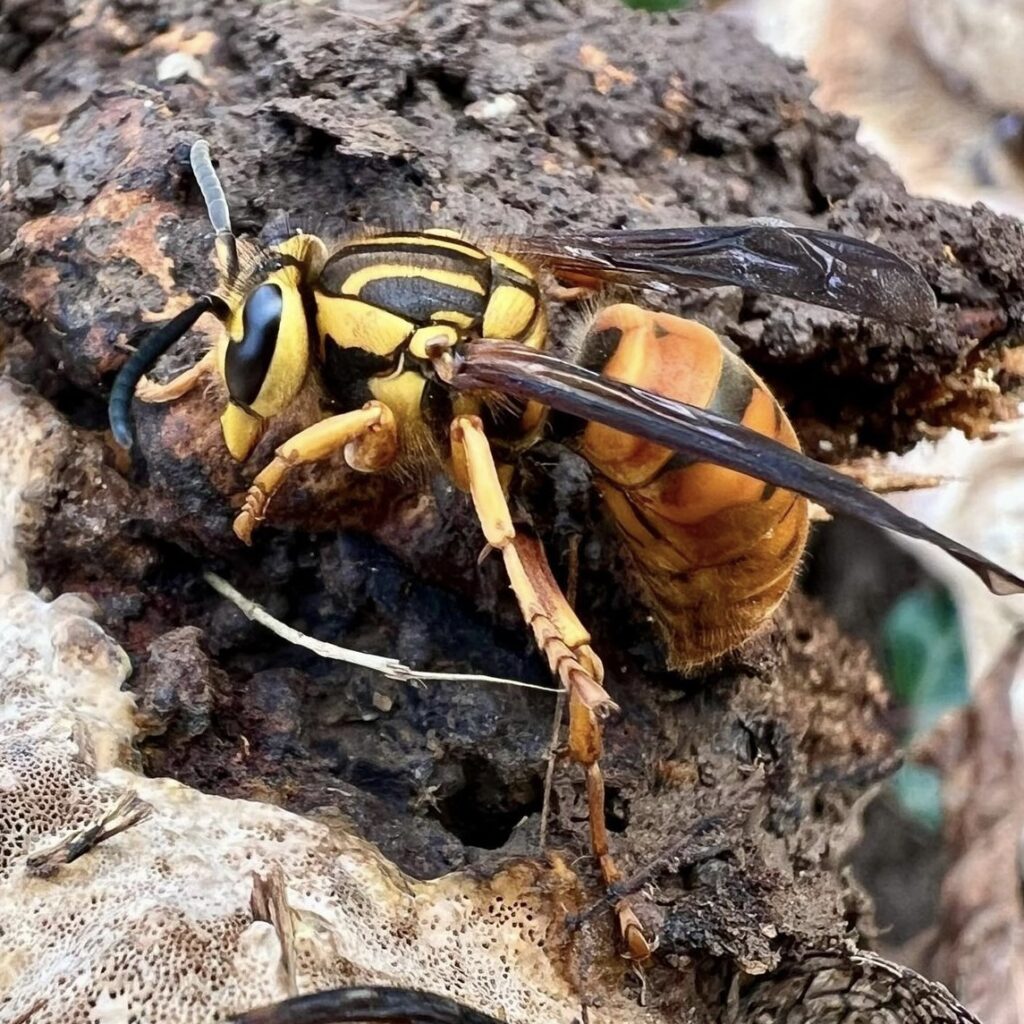
Southern yellowjacket queen (Vespula squamosa)
I’ve been observing these impressively large wasps around the Arboretum for a few days but haven’t managed to get a good photo. This photo is from my archives. These wasps use an interesting strategy to establish colonies. The mated Southern yellowjacket queen overwinters under leaf litter, tree bark, and sometimes in human structures. When she emerges from hibernation, she may start her own colony, but, will more commonly take control of an existing Eastern yellowjacket nest by murdering the queen. Once the Eastern queen is eliminated, the workers accept the Southern queen, and she’ll begin laying eggs. Eventually, the colony will be made up of only Southern yellowjackets. It’s not surprising she is victorious over the smaller Eastern yellowjacket queen – take a look at those mandibles!
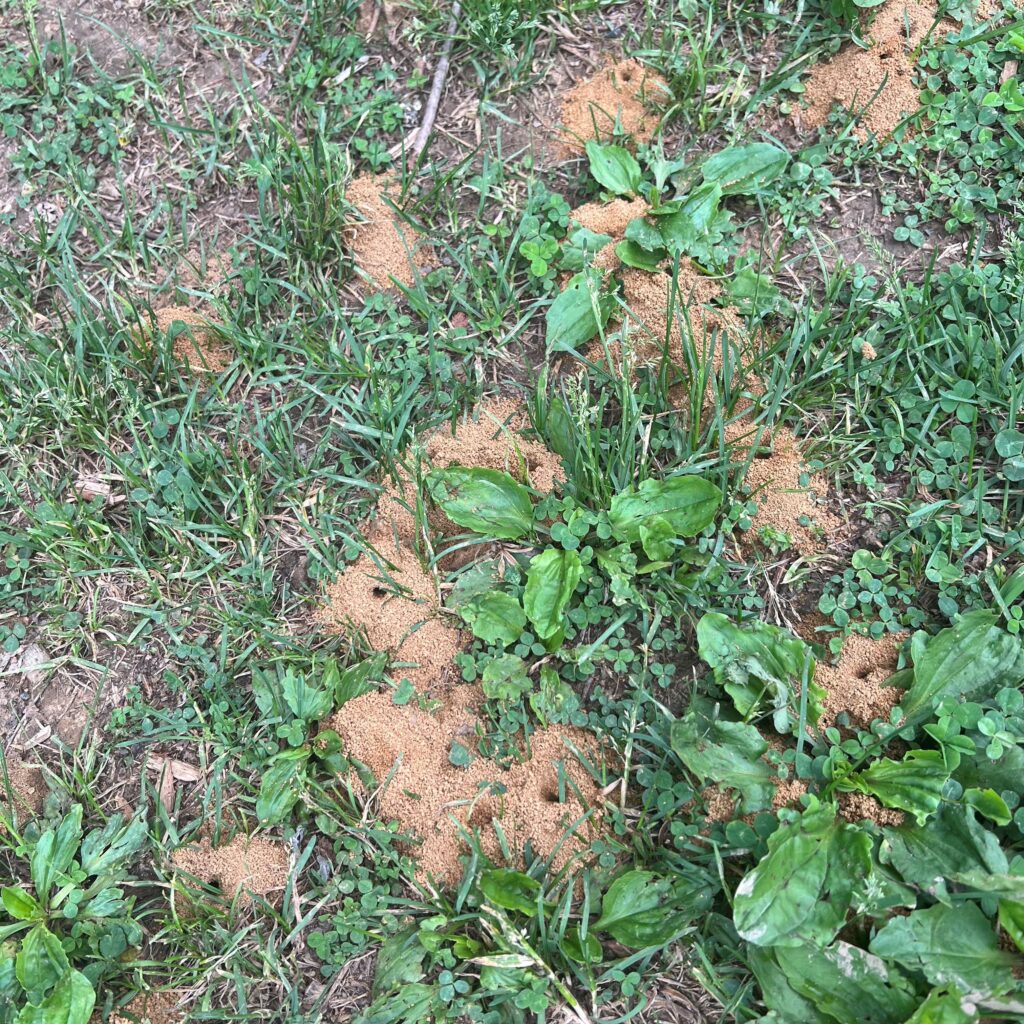
Mining bee nest aggregation
An amazing aggregation of mining bees seemed to pop up in Tyler’s parking lot over a 24-hour period. Certain species of solitary bees will nest together in large aggregations like this, with each female having her own nest and entrance. Other species will share an entrance while each female maintains an individual nest — similar to an apartment building setup. I was unable to identify the species as it was chilly, and the bees were not very active. This aggregation was in the first row of the parking lot, near the Maple tree. The video below shows a female re-excavating a nest entrance that was likely trodden upon.
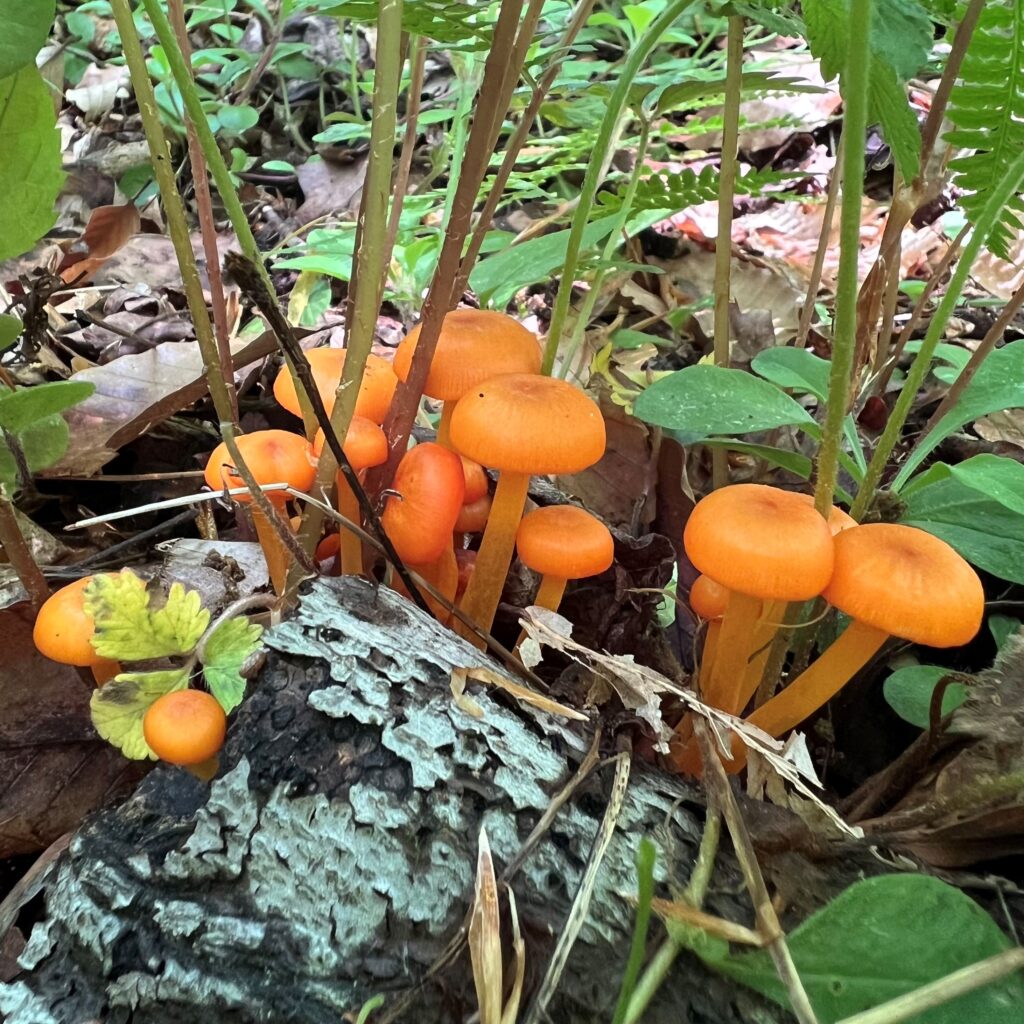
Orange mycana (Mycena leaiana)
I spotted this small cluster of mycena under ferns on the White Trail. This fungus consumes dead wood. The mushrooms have a slightly sticky texture, and their orange pigment can transfer to the skin (though it washes off easily). The pigment responsible for the orange color also has antibiotic properties.
Report: May 20, 2024
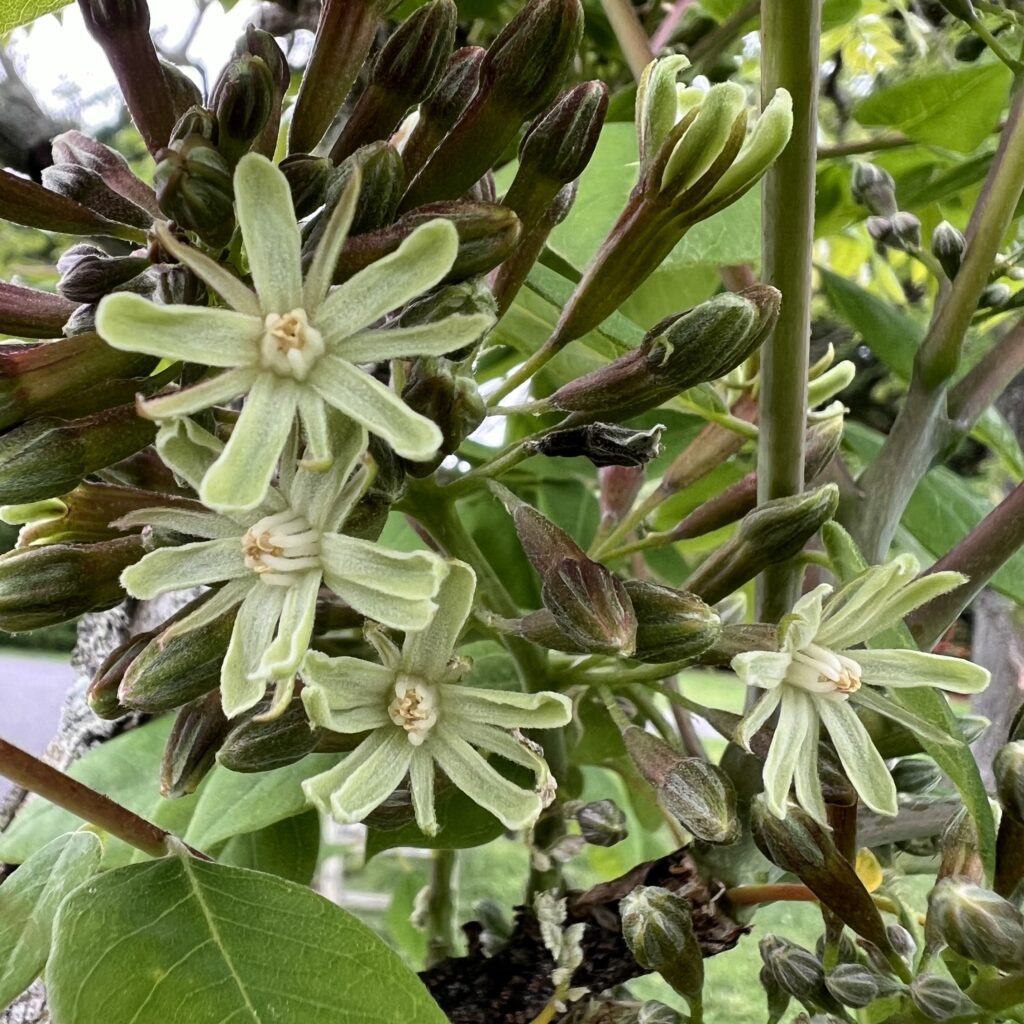
Kentucky coffeetree (Gymnocladus dioicus)
The flowers are opening, and you can smell them from quite a distance. Seek them out near the Crooked Goblin Shack.

Flame azalea (Rhododendron calendulaceum)
These beauties can be found across from the Crooked Goblin Shack, outside of Stonehouse and near the Cape May Birdhouse.
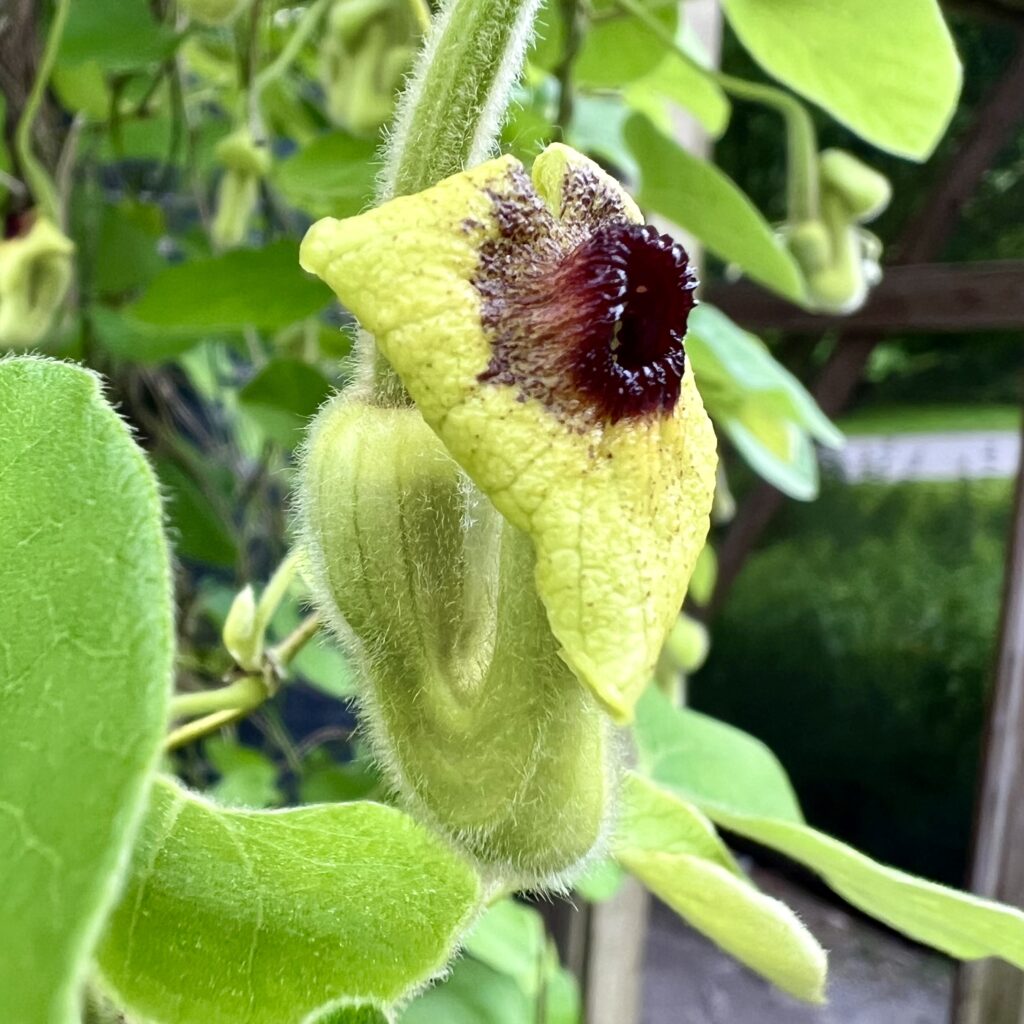
Woolly Dutchman’s pipe (Aristolochia tomentosa)
Located at the Pollinator Preserve the Woolly Dutchman’s pipe is a host plant for pipevine swallowtail butterflies. The Dutchman’s pipe flowers are pollinated by small flies and gnats. You can read about this plant’s interesting pollination strategy here.
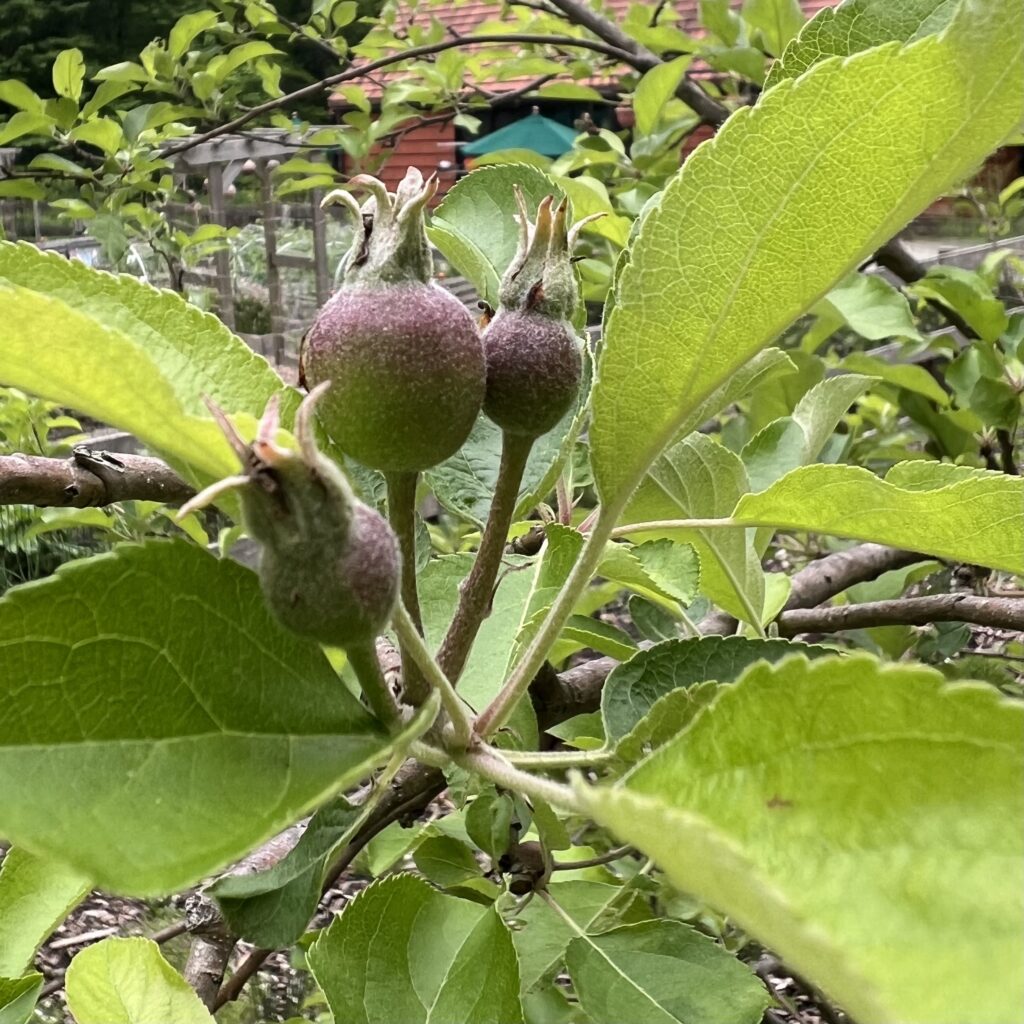
Apples
Located at Lucille’s Garden.
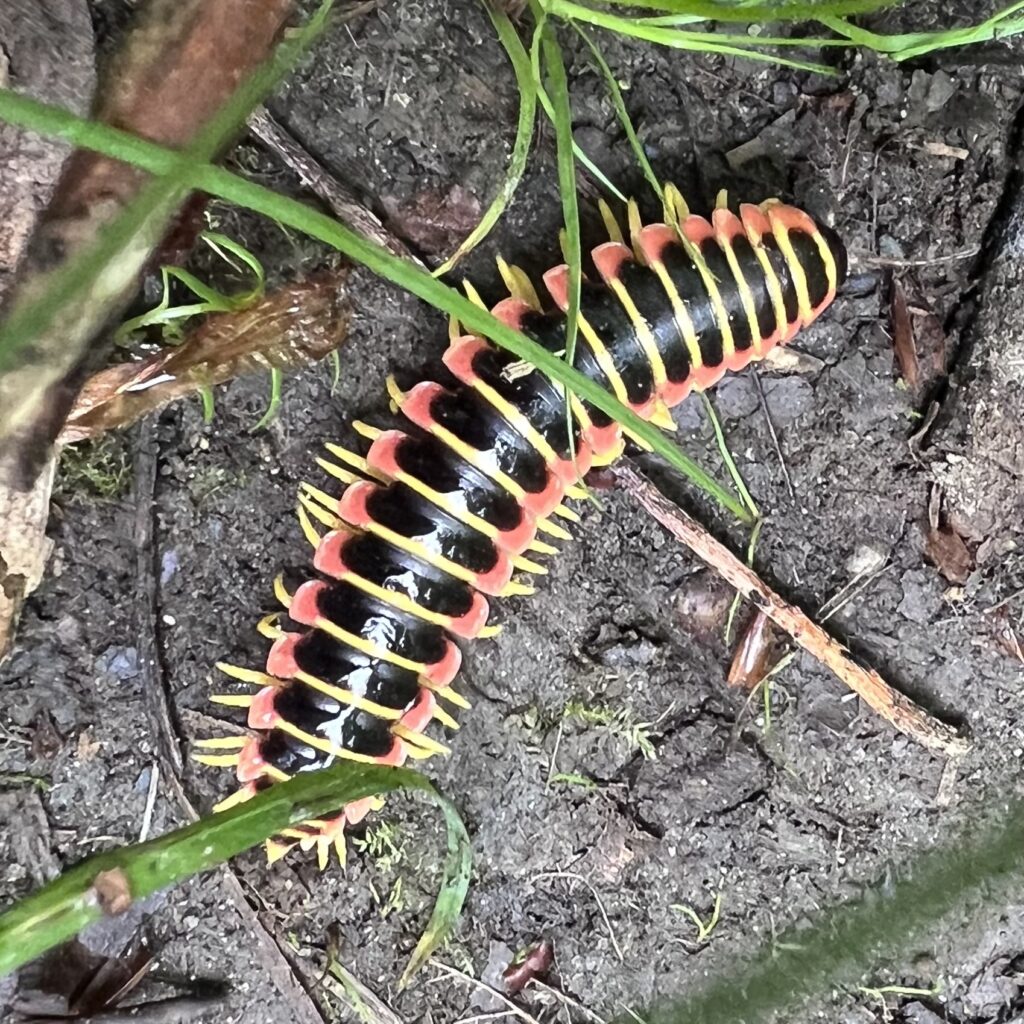
Kentucky Flat Millipede (Apheloria virginiensis)
Millipedes are detritivores that recycle nutrients by eating dead plants and animals. They feed on decaying organic matter such as leaves, fungi, wood, and plant material. Many millipedes contain cyanide compounds! The bright coloration of this millipede, seen on the Blue Trail, warns predators that it’s poisonous. The amount of cyanide is not enough to seriously harm a human, but it can cause painful eye irritation. It’s best to observe but not handle these arthropods.


